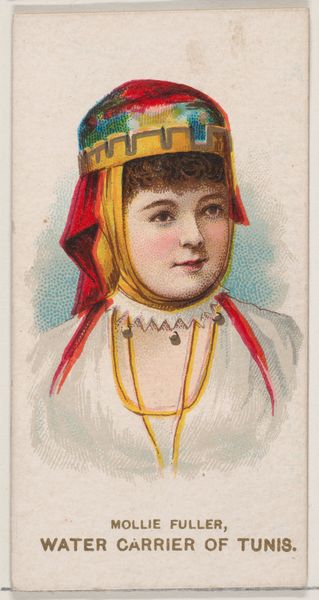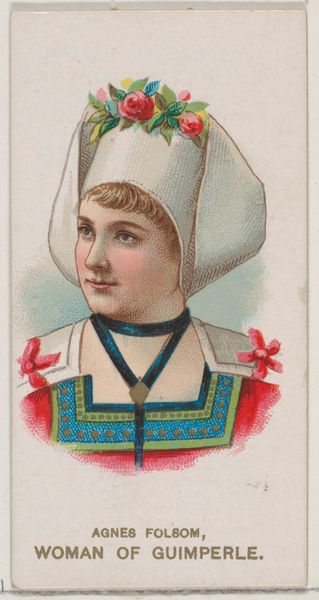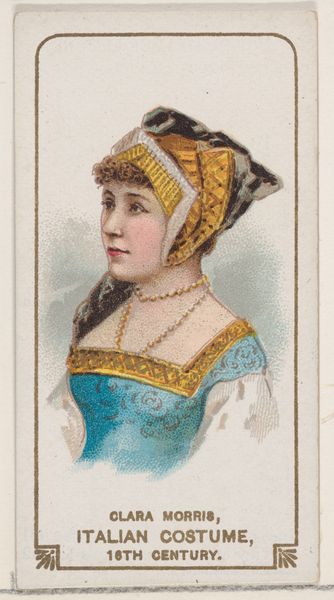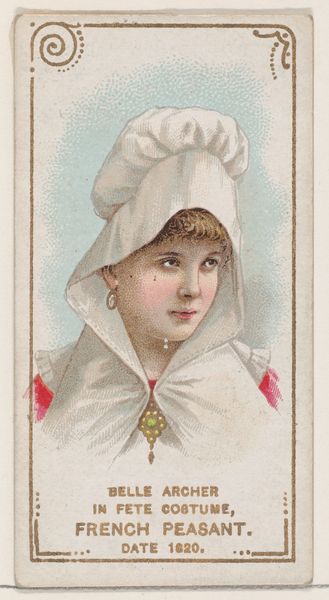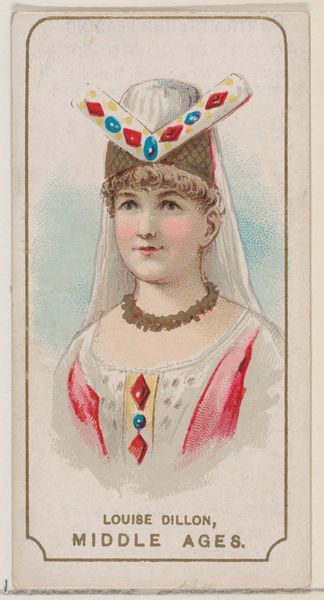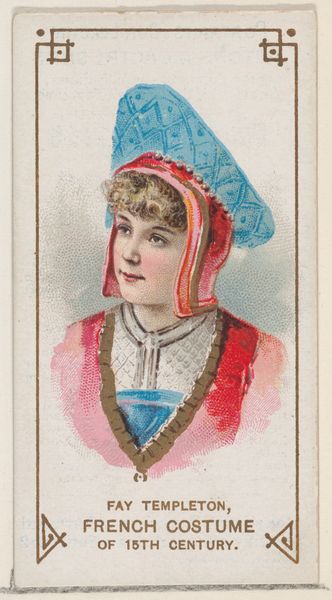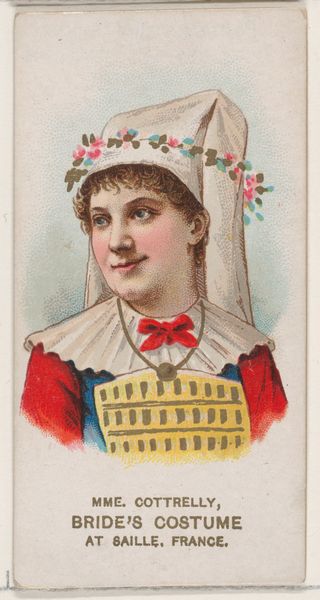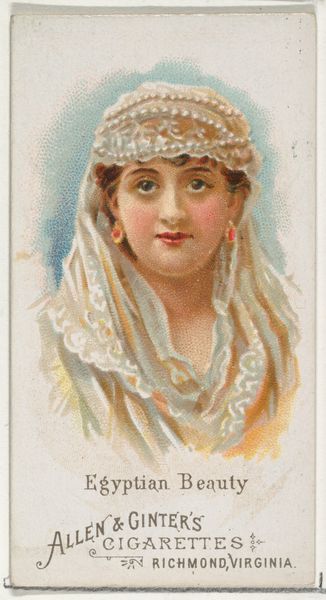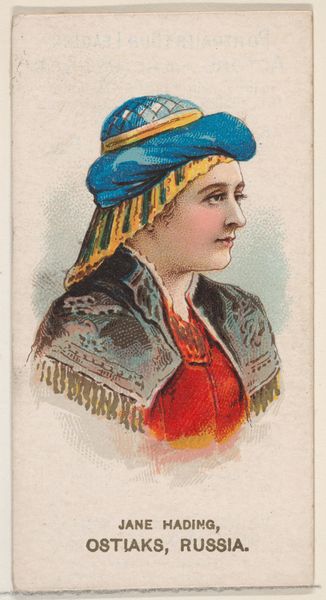
Isabella Irving Dressed in European Costume of the 16th Century, from the set Actors and Actresses, Second Series (N71) for Duke brand cigarettes 1888 - 1890
0:00
0:00
drawing, coloured-pencil, print
#
portrait
#
drawing
#
coloured-pencil
# print
#
coloured pencil
#
portrait drawing
#
history-painting
#
watercolor
Dimensions: Sheet: 2 3/4 x 1 1/2 in. (7 x 3.8 cm)
Copyright: Public Domain
Curator: Let's take a moment to discuss "Isabella Irving Dressed in European Costume of the 16th Century." This piece is a print, a colored-pencil drawing actually, that belonged to the set called Actors and Actresses, Second Series, created by W. Duke, Sons & Co. between 1888 and 1890. Editor: It’s striking, though the aesthetic is strange! Her direct gaze is strong. It has an ethereal quality—her slightly blushed skin paired with that elaborate headdress. Almost doll-like, despite her sharp expression. Curator: These were trade cards originally inserted in cigarette packs, so its objective was to depict notable people, particularly actresses, often in theatrical or historical attire. Contextually, these cards operated within a larger framework of image distribution, promoting brands while also disseminating idealized visions of beauty and culture. Editor: It feels almost fetishistic now, appropriating historical garments as a tool for promotion, reducing culture to costume. We must ask, whose gaze are we serving? Who is profiting? Her identity, conflated with this era and reduced to an exotic representation is really problematic. Curator: It's important to note how visual culture plays a role in shaping public perception. Cigarette companies often tried to associate themselves with sophistication, history, and the arts through these collectible series. Consider that during this era, the performance and representation of women became heavily commodified within a burgeoning mass culture. Editor: Yes, thinking about how late 19th-century industrialization fuelled advertising, women’s identities were marketable assets, a point also exemplified by the nascent celebrity culture of actresses. Isabella Irving, whomever she may be, functions primarily as an emblem here. Her humanity is entirely secondary. Curator: Precisely. While at first glance the artwork presents a picturesque historical tableau, on closer inspection it lays bare complex relationships between commerce, representation, and the construction of identity during a transformative historical period. Editor: Understanding those power dynamics lets us view these prints not just as charming portraits, but as little cultural capsules brimming with socio-political data.
Comments
No comments
Be the first to comment and join the conversation on the ultimate creative platform.
